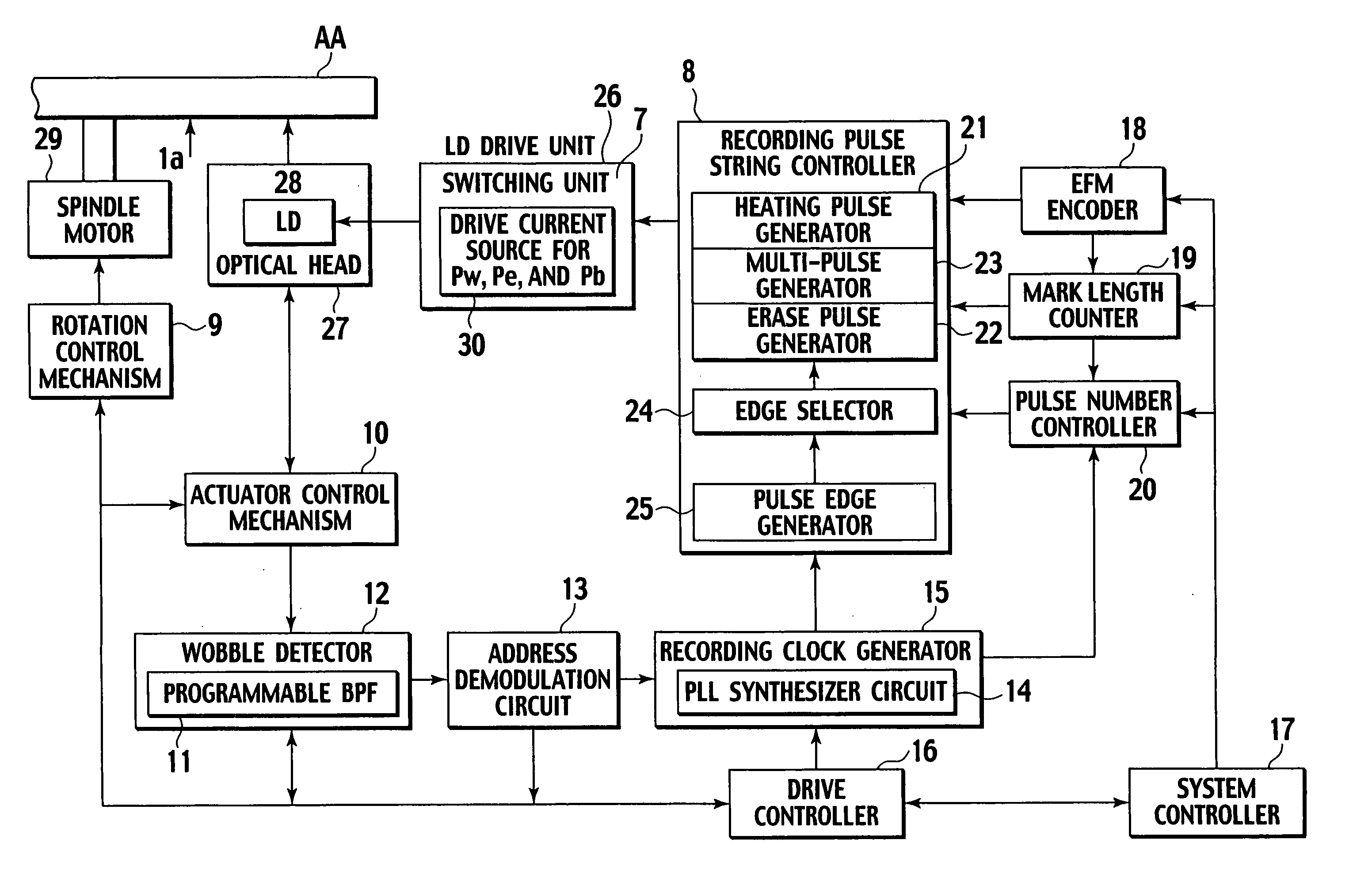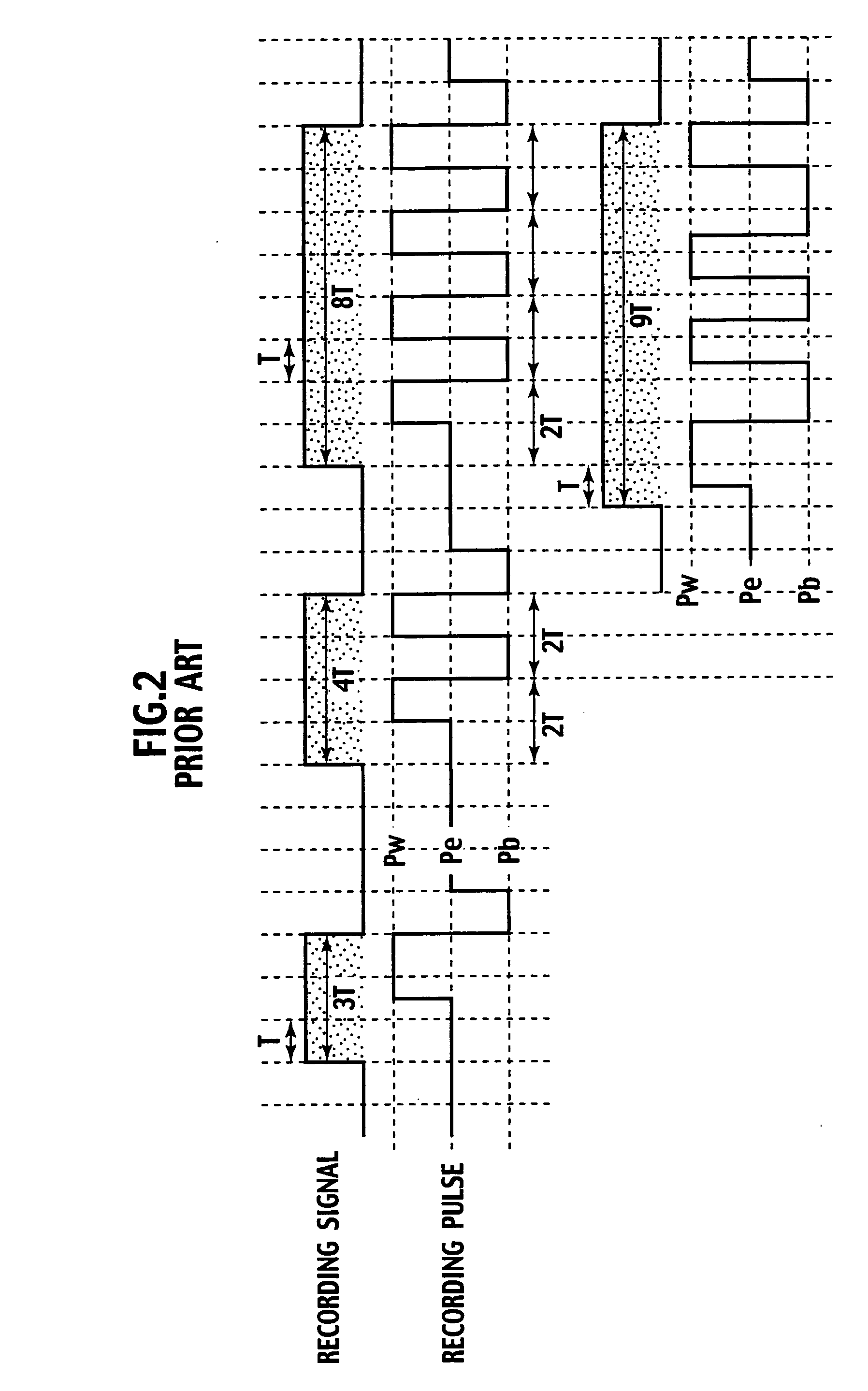Optical recording method, optical recording medium, optical recording medium recording device, optical recording device, optical disk, optica disk recording/reproducing device
a recording medium and optical recording technology, applied in the field of optical recording medium optical recording device, optical recording medium recording device, etc., can solve the problems of not being practical enough, preventing marks from being properly recorded on the recording layer of the dvd medium, and needing 25 minutes to complete the writing of the 4.7-gb dvd medium
- Summary
- Abstract
- Description
- Claims
- Application Information
AI Technical Summary
Benefits of technology
Problems solved by technology
Method used
Image
Examples
tenth embodiment
of Optical Recording Medium
[0167] The recording layer 3 was made by the co-spattering of a four-element single alloy target of Ge—In—Sb—Te and an Si target, to have a composition ratio of Ge1In5Sb76Te17Si1. Except this, the same optical recording medium as that of the second embodiment was prepared. Measurements similar to those of the second embodiment were carried out, and as shown in FIG. 9, characteristics substantially equivalent to those of the second embodiment were obtained for both the 4×-speed recording and 6×-speed recording.
eleventh embodiment
of Optical Recording Medium
[0168] The recording layer 3 was made by the co-spattering of a four-element single alloy target of Ge—In—Sb—Te and an Al target, to have a composition ratio of Ge1In5Sb76Te17All. Except this, the same optical recording medium as that of the second embodiment was prepared. Measurements similar to those of the second embodiment were carried out, and as shown in FIG. 9, characteristics substantially equivalent to those of the second embodiment were obtained for both the 4×-speed recording and 6×-speed recording.
twelfth embodiment
of Optical Recording Medium
[0169] The recording layer 3 was made by the co-spattering of a four-element single alloy target of Ge—In—Sb—Te and a Bi target, to have a composition ratio of Ge1In5Sb74Te16Bi2. Except this, the same optical recording medium as that of the second embodiment was prepared. Measurements similar to those of the second embodiment were carried out, and as shown in FIG. 9, characteristics substantially equivalent to those of the second embodiment were obtained for both the 4×-speed recording and 6×-speed recording.
PUM
 Login to View More
Login to View More Abstract
Description
Claims
Application Information
 Login to View More
Login to View More - R&D
- Intellectual Property
- Life Sciences
- Materials
- Tech Scout
- Unparalleled Data Quality
- Higher Quality Content
- 60% Fewer Hallucinations
Browse by: Latest US Patents, China's latest patents, Technical Efficacy Thesaurus, Application Domain, Technology Topic, Popular Technical Reports.
© 2025 PatSnap. All rights reserved.Legal|Privacy policy|Modern Slavery Act Transparency Statement|Sitemap|About US| Contact US: help@patsnap.com



